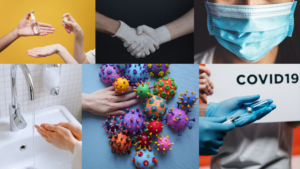Heating could be the best way to disinfect N95 masks for reuse

“Researchers found that heating N95 face masks preserves their filtration efficiency for 50 cycles of disinfection.”
Since the outbreak of the COVID-19 pandemic, N95 face masks have been in short supply. Health care workers, in particular, desperately need these masks to protect themselves from the respiratory droplets of infected patients. But because of the shortage, many have to wear the same mask repeatedly. Now, researchers reporting in ACS Nano have tested several methods for disinfecting N95 materials, finding that heating them preserves their filtration efficiency for 50 cycles of disinfection.
N95 masks contain a layer of “meltblown” polypropylene fibers that form a porous, breathable network. To help capture smaller particles that could slip through the holes, the fibers are electrostatically charged. The U.S. Centers for Disease Control and Prevention has recommended several methods for disinfecting N95 masks, such as heating, ultraviolet (UV) radiation and bleach treatment, but so far they have not been tested extensively, especially for multiple rounds of disinfection. Yi Cui and colleagues wanted to compare five of the methods that could reasonably be used within a hospital setting to see how mask materials hold up to repeated disinfections.
In this study, instead of analyzing N95 masks — which should be reserved for health care workers — the researchers examined pieces of the meltblown fabric used to make these masks. They treated the material with a particular disinfectant and compared its ability to filter aerosol particles (resembling respiratory droplets, but lacking coronavirus) before and after disinfection. The team found that spraying the fabric with an ethanol or chlorine bleach solution drastically reduced the filtration efficiency after only one treatment, from about 96% to 56% (ethanol) or 73% (bleach). A single steam treatment maintained filtration, but five steam treatments led to a sharp decline in efficiency. UV radiation allowed up to 20 cycles of disinfection; however, administering the exact dose of UV that kills the virus without damaging mask materials could be problematic, the researchers note. The best disinfection method appeared to be heating. For example, heating at 185 F for 20 minutes allowed the fabric to be treated 50 times without loss of filtration efficiency. But frequently donning and removing N95 masks could affect fit, which also impacts performance, the researchers point out.
Reference: Lei Liao et al., Can N95 Respirators Be Reused after Disinfection? How Many Times? ACS Nano 2020, Publication Date:May 5, 2020, doi.org/10.1021/acsnano.0c03597
###
The authors acknowledge that they are founders, shareholders or employees of 4C Air, Inc.
The abstract that accompanies this paper can be viewed here.
The American Chemical Society (ACS) is a nonprofit organization chartered by the U.S. Congress. ACS’ mission is to advance the broader chemistry enterprise and its practitioners for the benefit of Earth and its people. The Society is a global leader in providing access to chemistry-related information and research through its multiple research solutions, peer-reviewed journals, scientific conferences, eBooks and weekly news periodical Chemical & Engineering News. ACS journals are among the most cited, most trusted and most read within the scientific literature; however, ACS itself does not conduct chemical research. As a specialist in scientific information solutions (including SciFinder® and STN®), its CAS division powers global research, discovery and innovation. ACS’ main offices are in Washington, D.C., and Columbus, Ohio.



